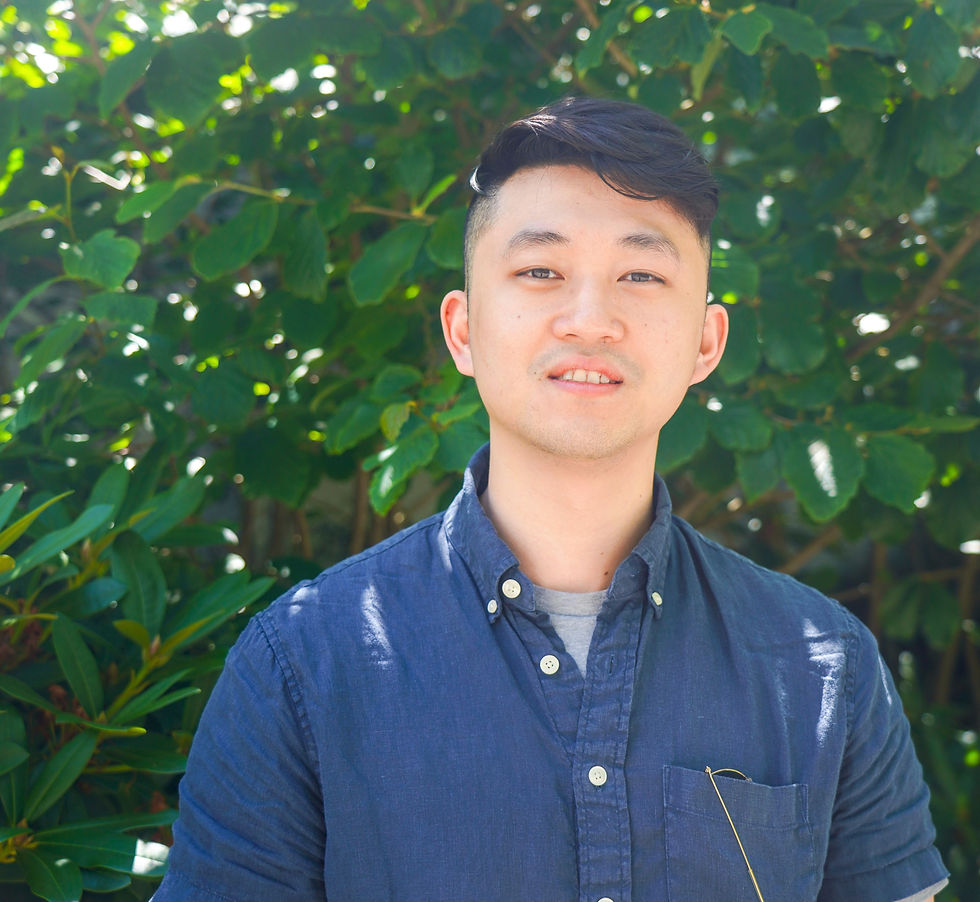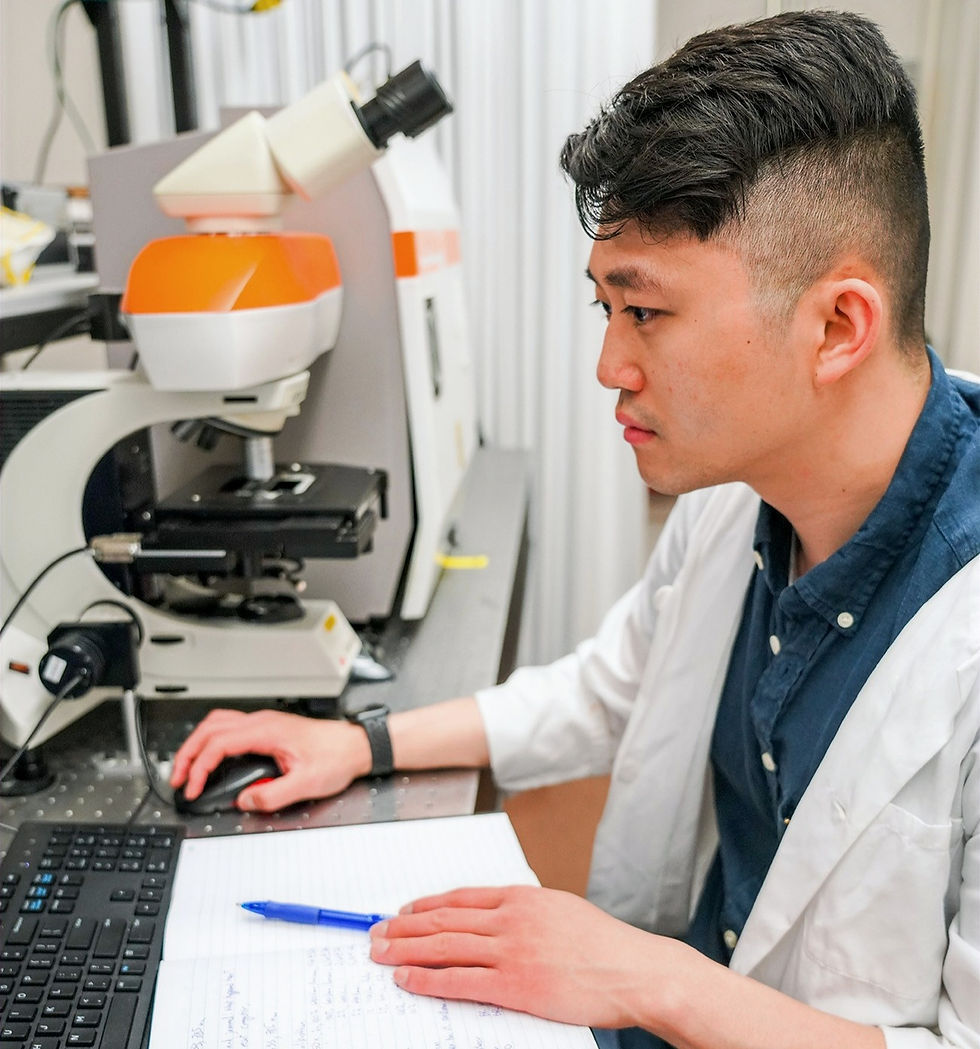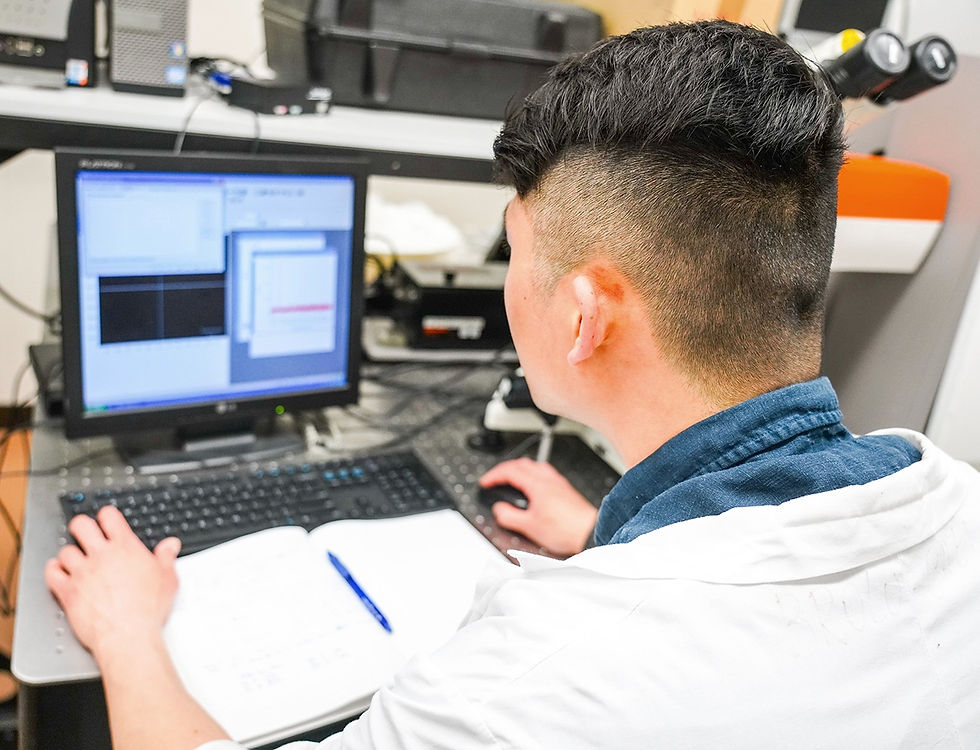Spectroscopy Expertise Helps Ocean Diagnostics Optimize Microplastic Research
Innovative spectroscopy techniques will advance plastic pollution science and develop analytical research and monitoring standards

Pictured above: Dr. Sean Yang, Research Scientist, Ocean Diagnostics
To better understand microplastics in the environment and inform decision making, researchers use a scientific method called spectroscopy, a study interaction of light with matter, to chemically identify the synthetic particles. This helps to identify the sources and potential solutions to microplastic pollution, a complex global problem that threatens environmental and human health.
A core technique to both Ocean Diagnostics’ laboratory analyses capabilities and the company’s first-of-its-kind in-situ sensor to detect microplastics (currently under development), spectroscopy is an important part of ODI’s scientific capabilities. Dr. Sean Yang, spectroscopy specialist and chemist who has extensive experience applying spectroscopy to environmental chemistry problems, is improving ways to study, trace and quantify microplastic pollution.
Dr. Yang ’s focuses on key challenges in microplastic analysis with spectroscopy, including its inefficiency and difficulty in reliably measuring microplastics changed by environmental exposure. By developing automated spectroscopy techniques, novel optical imaging systems, reference libraries and machine learning algorithms to process the data, Dr. Yang aims to improve the quality, reliability, and efficiency of microplastic analysis.
These cutting-edge techniques are being used to analyze a range of environmental microplastic samples for ODI’s academia, government and community science partners; advance plastic pollution science; and develop analytical research and monitoring standards.

Spectroscopy Explained
Spectroscopy is the study of interaction between light and matter. Though there are many techniques, at a high level, it involves probing material with a light source and recording the response. Every molecule has a unique interaction with light which can be recorded, measured and used to identify the molecule.
Picture a prism splitting white light into a rainbow. In spectroscopy, you would record the rainbow spectrum to identify the material of the prism. Each material would create a unique spectrum. There are two common types of vibrational spectroscopic techniques: infrared absorption (IR) and Raman scattering. Although both IR and Raman spectroscopy yield molecular identities, the two techniques differ in their interactions with the material. Typically, the absorption of the IR light is detected in IR spectroscopy while the emitted Raman scattering light is detected for Raman spectroscopy.
Before coming to Ocean Diagnostics, Dr. Yang was intrigued to jump into the environmental sector. Throughout his academic career, he read environmental papers and realized significant knowledge gaps in the use of spectroscopy, a concept he is well-versed in.
“I always wanted to move to the environmental sector. At this stage in my life, I feel like I can contribute.” As a spectroscopy expert, Sean enhances how these techniques are used in the environmental space.
Spending three years focusing on the fundamentals of conventional spectroscopy, he developed a strong foundation and later went on to create his own innovative method which was then published.
“At its core, instead of using one light to probe, you use two lights and overlap them through space and time. This creates a third field, which is the sum frequency of the first two,” Dr. Sean Yang, Ocean Diagnostics

This innovation is wildly exciting as it allows the user to get a signal even when the probed material is surrounded by something else. For example, if you have a liquid but you want to probe only the surface of the liquid, you can use this technique.
“Doing this you can be sure you are probing the molecules you want to look at. This is a very cool technique. I encourage everyone to have a look. There are a lot of applications for this,” Sean notes that this is a young science (developed in 1960s), so there is a lot of room to explore and expand on techniques used.
Exploring the Sciences and Optimizing Optics
Dr. Yang stumbled into spectroscopy after pursuing a kinesiology undergrad. He became a certified personal trainer after high school and, enthused about the fitness, he imagined the next step was to enrol in a kinesiology degree. While in the program, it wasn’t long until he realized his interest in chemistry.
“We had to take other science courses and that’s when I stumbled across chemistry. When I took organic chemistry, I just feel in love with it. I still love the process of total synthesis,” Sean explains the moment he decided to switch programs. After one and a half years in kinesiology, he followed his passion for chemistry.
“The initial stages of chemistry involve a lot of memorization of reactions, but when you get past that stage, it is like exploring.”
After learning the fundamentals, Dr. Yang explains that chemistry becomes a problem-solving and optimization puzzle. Often you will need to take a molecule and transform it into the material you want. It is essentially figuring out how to get from point A to point B.
“I always found this fascinating. There are usually thousands of ways to get from point A to point B, but what is the most efficient way? Academically, you may find the perfect way, but commercially it may not work. For spectroscopy, a lot of times it is an optimizing problem,” he says.
Later into his chemistry degree, Dr. Yang came to realize higher levels of chemistry are essentially physics. He began taking courses in optics, spectroscopy and quantomechanics, statistical mechanics in chemistry, which eventually lead to his in-depth spectroscopy work, a love that comes in rather handy at Ocean Diagnostics.

Applying Spectroscopy Expertise to Microplastics
While working on his Ph.D. projects, Dr. Yang came across microplastics, plastic particles 5 mm or smaller in size that are found in all corners of the world. He became familiar with the pollutant when an undergrad student came into the lab to study microplastics using spectroscopy.
“That was the first time I learned that microplastics even existed. It’s been in the back of my mind since then. It’s out there. What are we going to do about it?”
Now working with Ocean Diagnostics’ science team, Dr. Yang builds on existing spectroscopy techniques; he examines automations from taking spectrum of the microplastics to analyzing the data.
“I am looking at how can we deploy these techniques really well and really efficiently,” he explains.
Ocean Diagnostics Inc. (ODI) is a Victoria, B.C.-based environmental impact company that diagnoses and protects our planet from the threats of plastic pollution and biodiversity loss. Through innovative technology, cutting-edge laboratory capabilities and collaborative partnerships, ODI enables scientists and the public to collect the data needed to influence local and global solutions.
